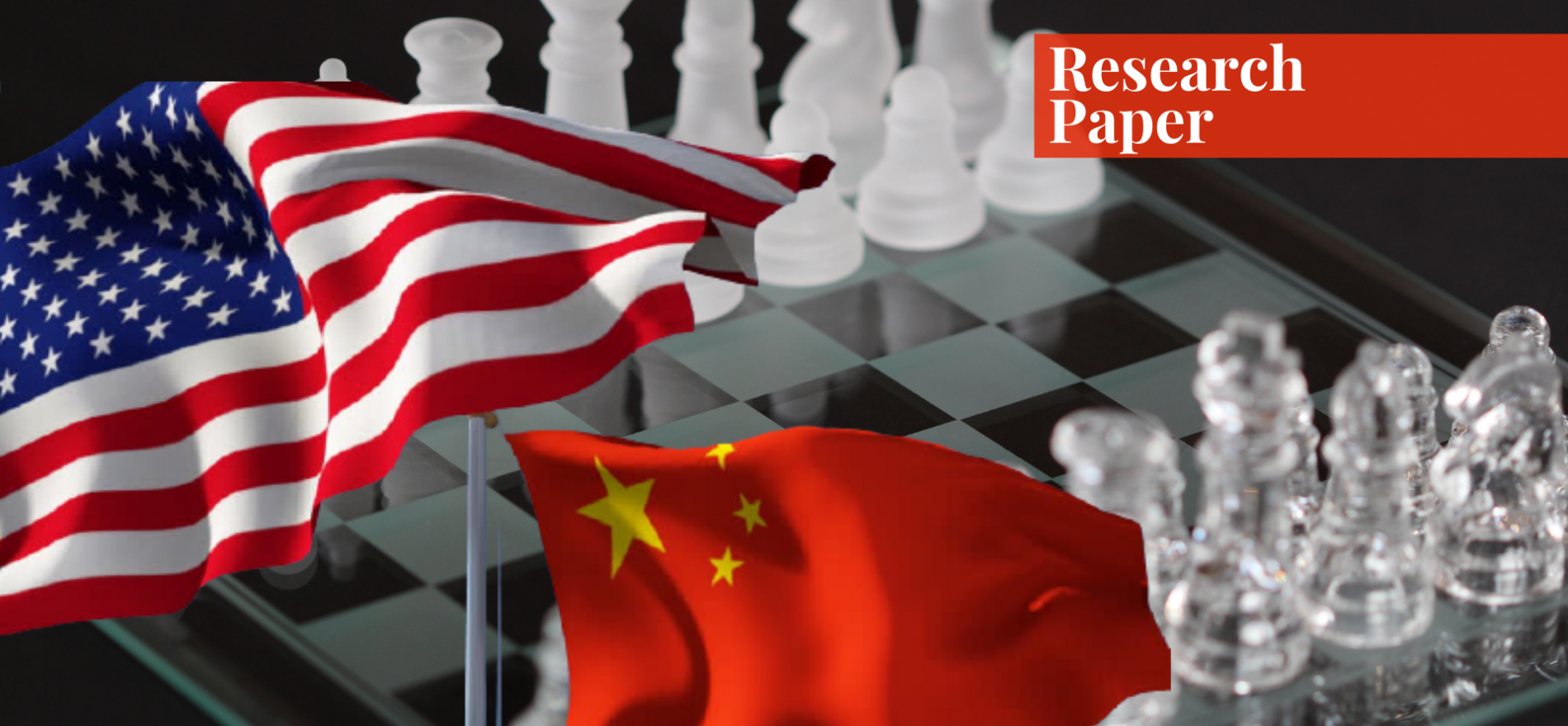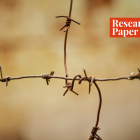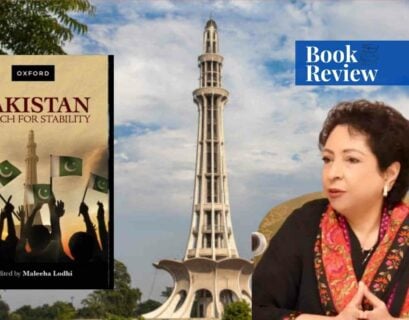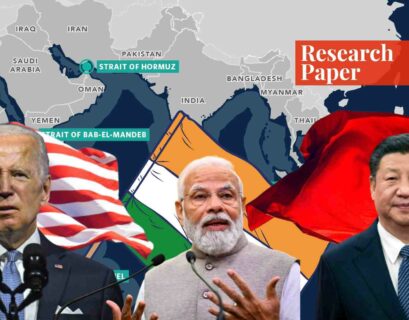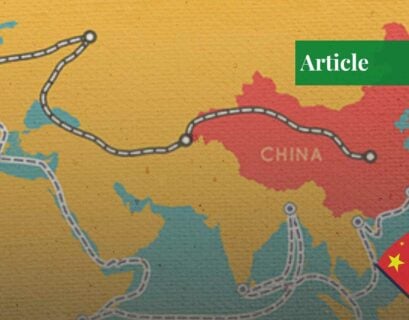An aspirant researcher, with an interest in international politics, global powers competition, diplomacy and foreign policy, Hira Akram is a student of International Relations at National Defence University. She is currently enrolled in the 7th semester of her bachelor's degree. She has interned at the UNDP.
Abstract
This paper aims to analyze the alignment of regional players on the Asia Pacific Chessboard through the lens of the Balance of Power theory. China and the USA are identified as the chief players on this chessboard, employing strategies of hard and soft balancing to counter the influence of each other.
Using the analogy of the game of chess, different roles can be associated with the regional and extra-regional players. Under the Trump administration, America resorted to a hard balancing strategy against rising Chinese threats, while China is still relying on a soft balancing strategy. The American presidential elections of 2020 were significant in this regard as they very much determined the future of Sino-American balancing competition in the Asia Pacific region.
Introduction
The advent of the 21st century brought with itself a shift from the “American Century” towards the “Asian Century”. American President Bush proclaimed the 21st century as the Asian Pacific century in 2002. The significance of the region was reinforced by the American Secretary of State H. Clinton in 2011, when she stated that the future of world politics would be decided in Asia.1
It is phenomenal how the once-neglected region has now emerged as the central stage in the power struggle between the major powers. The region gained popularity due to its tremendous economic growth rate.
Besides that, the region is also marked for the presence of geopolitical chokepoints, hotspots—the Strait of Malacca, Korean Peninsula, etc.—and the contention of sovereignty over disputed areas—Paracel Islands and other disputed areas in the South China Sea. Due to these disputes, the regional players are investing more in the defense sector, modernizing their armies. The defense expenditure of the Asia Pacific region has outnumbered the European defense spending.
The region’s significance has increased for the USA due to the rise of a potential rival in the shape of China. After the fall of the USSR, the USA emerged as the sole superpower in the post-Cold War era. Now the scenario has changed; America is facing a rival and a serious challenger to its hegemony. It is important for the USA to contain this potential rival in its neighborhood and not allow it to expand its sphere of influence.
The former National Security Adviser, Zbigniew Brzezinski, identified “Eurasia” as the playing field where the world’s fate would be determined.2 The relative importance of Europe has declined as compared to that of Asia Pacific, owing to the latter’s emergence as the growth hub of the global economy and the rapid military modernization in the region.
To counter the rising Chinese threat, America is adopting a rebalancing politico-military strategy in the region. Whereas, China has adopted a policy of “Peaceful Rise 2.0”. According to it, China will still adhere to its policy of peaceful development but it is now more assertive in stabilizing the external environment crucial for its economic development. Adopting this policy also means that it would not compromise on its national interests and sovereignty.3
Due to the ongoing Sino-American balancing competition, the region of Asia Pacific has acquired the status of the new playing field and the fate of the hegemony of the existing superpower as well as the polarity of the international system would be determined on this playing field.
Balance of Power Theory
The alignment of different players in the region of Asia Pacific can be analyzed through the Balance of Power theory. It is based on the basic assumption that in this anarchic international system, states seek survival through self-help. This anarchy compels the state to continuously engage in power maximization because only that alone would ensure the survival of a state and overcome its security dilemma.
According to T.V. Paul, this competition for acquiring power is “a natural state of affairs in international politics”.4 If the power of a state increases overwhelmingly, it would threaten the survival of weaker states.
Unlike the Power Transition theory, the Balance of Power (BOP) theory suggests that the power parity leads to peace in the international system. Equilibrium of power among the great powers ensures that no single state posses overwhelming power. Hence, power parity ensures deterrence and prevention of military conflict. However, sometimes preventive wars are necessary to maintain this balance of power.
This theory is also applicable at a regional level. If a state acquires too much power in a region it becomes a threat for its neighboring states. That rising state would likely adopt aggressive policies in the region. The other states present in the region try to balance or counter this rising regional power.
To internally and externally balance the rising state, these other states can enhance their own economic capabilities and military muscles or forge alliances with other regional and extra-regional states. Alliances are usually threat-specific which means that they are temporary in nature, disappearing along with the threat disappears.
Stephen Walt presented a variation to this theory by signifying the role of threat perception as the main factor triggering the balancing behavior in a system. For example, powerful states could enter into an alliance to counter a weaker but aggressive rising power. Hence, the alliance is formed against a state that appears to pose the greatest threat at a particular time. The level of threat that a state might pose is perceived by different factors like the aggregate power, aggressive intentions, geographic proximity, and offensive power of a state.5
The state can opt for two types of strategies to counter a threat: hard balancing or soft balancing approach. The hard balancing tactic employs the strategy of formation and maintenance of military alliances. On the other hand, the soft balancing tactic involves “non-offensive coalition building” in the shape of limited security cooperation, collaboration in international institutions, military exercises, and strategic partnerships.6
Instead of solely relying on military tools, the state resorts to using other economic and diplomatic methods to counter the influence of its rival. Soft balancing can be transformed into hard balancing when the security competition becomes much more intense and the threat perception increases between the rival states.
The New Geo-Strategic Chessboard
The region of Asia Pacific has become the new geostrategic chessboard for the major powers. In this chessboard, China and the USA are considered the great powers who have enough capability to influence the behavior of other states. Hence, they are considered as the chief players, “Kings”, of this chessboard.
The main aim of this game is to checkmate or to overcome the rival King while protecting one’s own King and for this purpose different chess pieces—Bishops, Rooks, Knights, and Pawns—are used. China and the USA are using the regional players as their chess pieces in order to counter each other’s influence.
Using the analogy of chess, we could associate different roles with these states. The ranks and roles of the regional players are determined by different factors e.g. demography, geopolitics, history, economic and military prowess.
The Western King’s Chess Pieces and Strategy
The Queen and the Rooks
The Queen is the most powerful and valuable chess piece and whoever loses the Queen, loses the advantage in the game. The American naval power in the Asia Pacific could be considered as its Queen on the chessboard.
The Department of Defense has stated its objective in the region is to “deter conflict and coercion” and to “respond decisively” at the time of need.7 America has deployed some of its finest maritime war assets in the region e.g. USS Ronald Reagan and USS Theodore Roosevelt super-carriers, an amphibious assault warship—USS America—DDG-1000 stealth destroyers, B-52 strategic bombers, USS Montgomery littoral combat ships, and F-35 aircrafts.
America is projecting its naval supremacy in the region through its Indo-Pacific Command, which consists of 60% of the total American naval forces and 85,000 forward-deployed personnel.8 American naval assets are significant to counter the rapidly modernizing Chinese military and to keep a check on Chinese naval ambitions in the region.
Japan and South Korea are playing the role of “Rooks” for America in this chessboard. Rooks symbolize medieval era castles which were primarily used for defensive purposes. Both Japan and South Korea assume this role due to their geostrategic position and the presence of strong American military footholds in their territories.
Japan is home to 15 American military bases while 23 American bases are present in South Korea. The military bases are significant in two ways. First, they provide a sense of protection to the American allies present in the region, and secondly, they are an effort to overcome the American “tyranny of distance”.9 Shanghai and San Francisco are approximately 6,135 miles apart. Hence, the forward-deployed American forces can act as a quick response force at the time of need.
The Bishops
Australia and India, due to their power status and strategic location, plays the role of “Bishop” on the chessboard. A Bishop is the most important chess piece after the King and Queen. The USA considers both Australia and India as significant regional powers. They are vital members of QUAD alliance, which predominantly aims to counter the rising Chinese influence in the region.
The military alliance with Australia is seen by Americans as an ‘anchor of peaceful, rule-based order’ in the Asia Pacific.10 Australia can easily surveil important maritime routes in the region due to its pivotal strategic location.
Unlike Japan and Korea, Australia is looking for a more equal status in this security alliance. Some of the Australian heads of government, like Malcolm Fraser, have remained skeptical of military alliance with the US. Despite all this skepticism, Australia is still getting a security advantage from the USA.
India has long aspired to increase its sphere of influence outside the South Asian region and to become a regional hegemon. Keeping Indian aspirations in mind, America has effectively used India to counter the rising China threat.
During his visit to India in 2010, the former US President, Barack Obama, called India an ‘indispensable’ partner and endorsed India’s permanent seat in UN Security Council.11The Indo-US civil nuclear deal, which violates Article 1 of the Non-Proliferation Treaty, is a way to counter Chinese assertiveness and to create nuclear deterrence in the region.12
The Knights
The Republic of the Philippines and Singapore have assumed the role of “Knights”. Both have the potential to play a significant role in countering China due to their stable economies. The GDP of the Philippines and Singapore is ranked 35th and 38th by the IMF, respectively.13
Although the Philippines does have some reservations regarding American neocolonialist ambitions, the Chinese aggressiveness in the South China Sea has prompted them to associate themselves with the American block. The Philippines has taken the matter of Chinese assertiveness in the South China Sea to the International Tribunal, which finally gave the verdict in favor of the Philippines. It rejected China’s claim that it has “historic rights” over most of the South China Sea.14
Similarly, tensions do exist in Sino-Singapore relations due to two reasons: Singapore’s strong non-diplomatic ties with Taiwan and the “Malacca Dilemma”. China’s over-eagerness to resolve this dilemma is perceived as a security threat by Singapore due to its nearness to the Malacca Strait. This dilemma has led Singapore to procure arms from and strengthen military ties with the USA
The Pawns
The less influential players, Taiwan and Vietnam, are playing the role of “Pawns” for America. Pawns are the least valuable chess pieces and they are usually the first ones to be sacrificed during the game. The USA is using Taiwan as a tool to exert pressure on the Chinese government. China and Vietnam have competing territorial claims over Spratly and Paracel islands.
Due to their proximity to China, these Pawns have developed a sense of insecurity and are trying to seek a security umbrella against Chinese assertiveness. While the USA considers them as the first line of defense due to their location in the region.
The King’s Hard-Balancing Approach
In the past, America has been pursuing a soft balancing approach against the peaceful Chinese rise. The recent Chinese aggressiveness in the South China Sea and the rapid military modernization have been perceived as a threat by America and its regional allies.
Since 2017, America, under Trump’s presidency, has adopted a hard stance against China. The 2017 National Security Strategy implied that China is a challenger to American “influence, interests, and power” and it seeks to erode the “American security and prosperity”.15 Hence, America aims to tame the rising Chinese influence in the region.
The shift in the American balancing approach came due to two reasons. First, Trump’s Trade War against China; it caused the economic interdependence of both the states to decrease leading to them indulging in a zero-sum game. Secondly, the previous administrations never clearly stated China as a threat.
The regional players are looking towards the USA for arms procurement and seeking the American security umbrella. In the case of China, America hasn’t opted for the same hard balancing approach it pursued against USSR during Cold War. With the “Pivot to Asia” policy in place and the identification of China as a potential rival in the 2017 NSS report, America is relying more on its hard power and military alliances to counterbalance rising China.
The security dilemma in the region has intensified the military build-up and arms race in the region, with the USA arms market occupying the central position in this competition. In the year 2019, American State Department received 64 requests for arms procurement. Out of the 64, 21 requests, worth USD 24.8 billion, were made by the states present in the Asia Pacific region.
Taiwan requested the procurement of F-16s (USD 8 billion) while Japan wanted to procure the SM-3 missile system and Aegis Ashore Ballistic Missile Defense System (USD 7.2 billion).16 Under the Trump administration, the US-China relations became more strained. It created the possibility of the Quad Alliance becoming a hard balancing military coalition in the future.
Competition to Seek Allies
China’s foreign policy is seeing a shift from the policy of “hide and bide” to a more proactive foreign policy. China has been involved in a limited hard balancing approach at certain times in the region. Nevertheless, it has predominantly relied on its economic and diplomatic tools to enhance its influence in the region.
China is reluctant to enter into any formal military alliance due to its perception that the phenomenon of “chain-ganging”, where unconditional support to allies leads several states to enter into a military conflict, would be detrimental for its economic growth. But this does not mean that China would compromise on its national interest.
So to compete with the American supremacy in the Asia Pacific, China is focusing more on developing “strategic partnerships” with different regional and extra-regional players. As the USA has already established a strong alliance network in the region, China is now competing to seek allies and counter American power through a soft balancing approach.
The Eastern King’s Chess Pieces and Strategy
The Queen and Her Entrapment Strategy
The “Queen” of China, on the chessboard, is its economic prowess and the Belt and Road Initiative (BRI). China is seeking ways to counter the American “containment” by developing strong economic ties with the neighboring small and middle powers. Through the BRI project, China aims to invest more than USD 1 trillion in 72 countries.17
Besides the prodigious investment in the infrastructure development sector, China has also emerged as the world’s largest creditor, having lent USD 1.5 trillion around the globe.18 The Chinese economic initiatives such as Asian Infrastructure Investment Bank (AIIB) and BRI are considered, by the developing economies of the region, as lucrative opportunities to reap economic benefits from.
The success of the Chinese move on the geostrategic chessboard can be measured in terms of its success in attracting the US allies to join these projects. Australia, India, the Philippines, Singapore, South Korea, Vietnam are the members of AIIB.
Similarly, under the BRI projects two economic corridors, Bangladesh-China-India-Myanmar and China-Indochina Peninsula corridor are planned for this region. After the integration of these states in these economic ventures, it would be much more difficult for these states to be a part of an all-out anti-China military alliance in the region.
The Resurging Fallen-King-Turned-Bishop
China’s alignment behavior is different from the American one as it does not have a strong military alliance system, making it apparent that China lacks “Rooks” on the chessboard. China is more focused on developing “strategic partnerships” with Russia and North Korea than on building military bases.
An interesting scenario to note is the resurgence of the fallen “King” in the affairs of the Asia Pacific region. At the moment, Russia does not have enough potential to play the role of the “King” due to its economic constraints and limited ability to influence the behavior of other regional players. Regardless, it is certainly playing the role of an extra-regional “Bishop” for China on the chessboard.
After the Crimean annexation and the resulting sanctions on the already fragile economy of Russia, China appears to be the answer to all the economic woes of Moscow. China has the upper hand in this strategic partnership and Russia is well aware that it needs China more than China needs it. This partnership is based on the Sino-Russian convergence of economic and military interests in the region.
In the present scenario, Russia is playing the role of a second fiddle for China. For the time being, It has been presenting a pro-Beijing stance on different issues related to the South China Sea, and the Korean peninsula. This mainly comes from the realization that with Chinese assistance Russia would be able to reach the East Asian markets.
These new markets will boost Russia’s energy exports in the region, improving the Russian economy. If Russia manages to stabilize its economy in the near future, it might pursue a more active foreign policy and seek to move out from the Chinese ambit.
The Bishop in the North
The American military bases present in Japan and South Korea, as well as the future plan of deployment of the THAAD missile system in South Korea, pose an equal threat for both China and Russia. Like Russia, North Korea does not have a stable economy and the presence of the American forces in the neighboring states is perceived as a threat by Pyongyang, particularly after the US imposed sanctions.
Due to its location, North Korea acts as a buffer state between China and the American forces present in South Korea. China has appeared as an “economy savior” for North Korea, by becoming its largest trading partner despite the sanctions imposed on the authoritarian regime.
China’s maneuvering has aligned the North Korean and Russian security interests with its own interests. In the future, if the need arises, the trio can be involved in some limited military cooperation against the common threat—America.
The Pawns
China is luring the developing countries of the region through its economic prowess. The developing countries like Maldives, Myanmar, and Sri Lanka are playing the role of “Pawns” for China. These pawns are tempted through infrastructure development projects, to increase the Chinese sphere of influence in the region.
The leasing of Maldives’ Feydhoo Finolhu Island and Sri Lanka’s Hambantota Port is perceived by the USA and its allies as a threat. This threat perception is based on the assumption that China could deploy its naval forces on these ports if it wishes to.
The former American Vice-President Mike Pence declared that Hambantota Port will become a Chinese “military base”.19 These infrastructure projects have been labeled by the West as a “debt trap” to enhance the Chinese sphere of influence. China and Sri Lanka have rejected these claims and stated that this port will be used for commercial purposes only.
The King’s Soft Balancing Approach
China has been successful, so far, in preventing the formation of any hard balancing coalition against its rise due to its ability to provide economic goods to the regional players. Through its development initiatives, China has been able to lure not only the neutral states of the region but also the American allies. It has also secured strategic footholds in the region by acquiring seaports on lease in different countries. China has gradually expanded its sphere of influence without evoking any hostile counter-balance approach by the West.
The situation changed under the Trump administration. During Donald Trump’s tenure, the US considered China as a potential threat. Despite that, China adopted a more confident and proactive foreign policy due to its tremendous economic growth in the last few years.
China has so far resisted the temptation to form a military alliance against the USA. Nonetheless, the situation can change instantly if the American hard balancing approach reaches the point where it initiates a pre-emptive war against China. Till then, China seems to be content with the accomplishments of its soft balancing approach in the region.
Conclusion
The chief players on the geostrategic chessboard have aligned the regional players according to their interests. The aim behind such a strategy is to increase the power of one’s own state vis-à-vis its rival. The center of gravity of the BOP has shifted from Europe towards Asia. So far, the world has not seen the same level of intensity in the Sino-American power competition that was witnessed during the Cold War. Yet, the situation is gradually moving towards an intense competition between the two powers.
After the Cold War, the USA was considered the sole superpower, and China was considered as a peaceful rising state, but now China has become an economic superpower and is perceived as a threat to American hegemony. This made the American presidential elections of 2020 even more significant in this scenario. Where the Trump administration had a hard balancing approach, President Biden is more likely to adopt a multilateral approach to counter China’s rising influence in the region.
China’s behavior is also important to decide the future of Asia Pacific. Chinese rapid military modernization and military aggression in the South China Sea in recent years have initiated a competition of arms procurement in the region. China has no interest in developing military bases or forging a military alliance as its economic prosperity is dependent on its peaceful interactions with other states but American strategies can incite China to do so.
It remains to be seen that if or when China displaces America as an economic superpower how that triumph will affect the security competition between the two states. Hence, the American approach and the Chinese counter-approach in the next few years would determine the fate of the Sino-American balancing competition in the region of Asia Pacific.
1 Hillary Clinton, “America’s Pacific Century,” Foreign Policy, 2011, https://foreignpolicy.com/2011/10/11/americas-pacific-century/
2 Zbigniew Brzezinski, The Grand Chessboard: American Primacy And Its Geostrategic Imperatives ( New York: Basic Books, 1997).
3 Jian Zhang, “China’s New Foreign Policy Under Xi Jinping: Towards Peaceful Rise 2.0?” Global Change, Peace and Security 27, no. 1 (2015).
4 Thazha Paul, introduction to Balance of Power, ed. Thazha Paul, James Wirtz, and Fortmann Michel (California: Stanford University Press, 2004).
5 Stephen Walt, The Origins of Alliances (New York: Cornell University Press, 1990).
6 T.V. Paul, “Soft Balancing in the Age of U.S. Primacy,” International Security 30, no.1 (2005).
7 Department of Defense, The Asia-Pacific Maritime Security Strategy (Washington D.C: Department of Defense, 2015).
8 Liu Xuanzun, “China Releases Report On US Military Presence In Asia-Pacific,” Global Times, 2020 https://en.people.cn/n3/2020/0622/c90000-9702886.html
9 Richard Bush, America’s Alliances and Security Partnerships in East Asia (Washington: The Brookings Institution, 2016).
10 Rory Medcalf, Australia and the United States: Navigating Strategic Uncertainty (Washington: The Brookings Institution, 2016).
11 Sheryl Stolberg and Jim Yardley, “Countering China, Obama Backs India For U.N. Council,” The New York Times, 2010, https://www.nytimes.com/2010/11/09/world/asia/09prexy.html?_r=1&src=mv.
12 Waseem Khan, Manzoor Ahmad and Murad Ali, “The Regional Impacts of India-Us Nuclear Deal,” Journal of Management Info 12, no.1 (2016).
13 International Monetary Fund. World Economic Outlook: Global Manufacturing Downturn, Rising Trade Barriers (Washington D.C: 2019).
14 Jane Perlez, “Tribunal Rejects Beijing’s Claims in South China Sea,” The New York Times, 2016, https://www.nytimes.com/2016/07/13/world/asia/south-china-sea-hague-ruling-philippines.html?searchResultPosition=1
15 National Security Strategy of the United States of America (Washington D.C.: The White House, 2017).
16 Aaron Mehta, “Here’s How Many Foreign Military Sales the US State Department Ok’d in FY19,” Defense News, 2019, https://www.defensenews.com/global/2019/10/04/heres-how-many-foreign-military-sales-the-state-department-okd-in-fy19/.
17 OECD, China’s Belt and Road Initiative in the Global Trade, Investment and Finance Landscape, (Paris: OECD Publishing, 2018).
18 Sebastian Horn, Carmen Reinhart, and Christoph Trebesch. How Much Money Does the World Owe China? (Massachusetts: Harvard Business Publishing, 2020).
19 Dick Nanto and Mark Manyin, China-North Korea Relations, North Korean Review 7, no. 2 (2010).
Bibliography
- Brzezinski, Zbigniew. The Grand Chessboard: American Primacy And Its Geostrategic Imperatives . New York: Basic Books, 1997.
- Bush, Richard. America’s Alliances and Security Partnerships in East Asia. Washington: The Brookings Institution, 2016.
- Clinton, Hillary. “America’s Pacific Century.” Foreign Policy. 2011. https://foreignpolicy.com/2011/10/11/americas-pacific-century/
- Department of Defense. The Asia-Pacific Maritime Security Strategy. Washington DC: Department of Defense, 2015.
- Horn, Sebastian, Carmen Reinhart, and Christoph Trebesch. How Much Money Does the World Owe China? Massachusetts: Harvard Business Publishing, 2020.
- International Monetary Fund. World Economic Outlook: Global Manufacturing Downturn, Rising Trade Barriers. Washington D.C: 2019.
- Khan, Waseem, Manzoor Ahmad, and Murad Ali. “The Regional Impacts of India-Us Nuclear Deal.” Journal of Management Info 12, no. 1 (2016): 3-5.
- Medcalf, Rory. Australia and the United States: Navigating Strategic Uncertainty. Washington: The Brookings Institution, 2016.
- Mehta, Aaron. “Here’s How Many Foreign Military Sales the US State Department Ok’d in FY19.” Defense News. 2019. https://www.defensenews.com/global/2019/10/04/heres-how-many-foreign-military-sales-the-state-department-okd-in-fy19/.
- Nanto, Dick, and Mark Manyin. China-North Korea Relations. North Korean Review 7, no.2 (2010): 94-101
- National Security Strategy of the United States of America. Washington D.C.: The White House, 2017.
- OECD. China’s Belt and Road Initiative in the Global Trade, Investment and Finance Landscape. Paris: OECD Publishing, 2018.
- Paul, Thazha. Introduction to Balance of Power. Edited by Thazha Paul, James Wirtz, and Fortmann Michel. California: Stanford University Press, 2004.
- Paul, T.V. “Soft Balancing in the Age of U.S. Primacy.” International Security 30, no.1 (2005): 46-71.
- Perlez, Jane. “Tribunal Rejects Beijing’s Claims in South China Sea.” The New York Times. 2016. https://www.nytimes.com/2016/07/13/world/asia/south-china-sea-hague-ruling-philippines.html?searchResultPosition=1
- Stolberg, Sheryl, and Jim Yardley. “Countering China, Obama Backs India For U.N. Council.” The New York Times. 2010. https://www.nytimes.com/2010/11/09/world/asia/09prexy.html?_r=1&src=mv.
- Walt, Stephen. The Origins of Alliances. New York: Cornell University Press, 1990.
- Xuanzun, Liu. “China Releases Report On US Military Presence In Asia-Pacific.” Global Times. 2020. https://en.people.cn/n3/2020/0622/c90000-9702886.html
- Zhang, Jian. “China’s New Foreign Policy Under Xi Jinping: Towards Peaceful Rise 2.0?” Global Change, Peace and Security 27, no.1 (2015): 5-19.
If you want to submit your articles and/or research papers, please check the Submissions page.
The views and opinions expressed in this article/paper are the author’s own and do not necessarily reflect the editorial position of Paradigm Shift.
